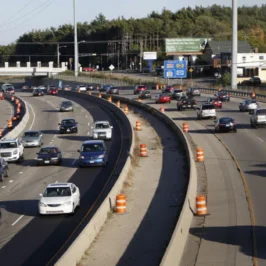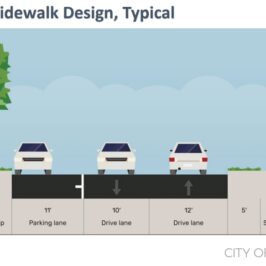Hello Midtown,
Starting on June 7th, and concluding on August 26th, all of the police districts in Madison will be initiating
strategic plans with the goals of reducing crime and disorder and increasing community engagement. In
addition to reading this blog, I encourage you to watch the attached video.
Our plan utilizes the stratified policing approach, which is a proactive model that works to
institutionalize crime reduction efforts by using proven and evidenced based strategies. Our efforts are
data-informed and not only will everyone on my district team be involved in our efforts, but other MPD
units and teams will be working to support the districts.
Midtown selected our crime, disorder, and community engagement priorities based on feedback from
our residents, our officers, available data, our ability to make an impact, and value of that impact on the
health and safety of the district. Importantly, other police districts selected priorities based on their
own district metrics so your experience may differ with a friend or even a neighbor depending on district
boundaries.
Importantly, we will continue to respond to calls for service, and serious incidents such as shootings,
robberies, and sexual assaults will be remain priorities and will continue to be handled via our normal
robust protocols and likely involve partners from other MPD work units such as the VCU (Violent Crime
Unit)i
I: CRIME
For the Midtown Strategic Plan, our crime priorities are burglary, thefts-from-auto, and stolen vehicles.
We have heard frequent citizen complaints about these crimes, and we know that these crimes can feed
off of each other—for example a garage door opener taken from a vehicle facilitates a burglary; and we
know that these property crimes have downstream impacts in terms of dangerous driving in stolen cars,
or stolen firearms being used in shootings. We also believe that some of the suspects in these property
crimes are the same suspects in violent crime and hazardous driving. It is our goal to reduce these crime
types by 15% between June and August compared to their corresponding three year average (2018-
2020).
FOCUS AREAS:
Relying on crime data from the last three years, Midtown identified a number of hot-spots and
we will use these as a starting point for our proactive efforts. Currently the top 5 hot-spot areas
for burglary, theft from auto, and stolen cars are:
1. North Breese Terrace
2. Milton St/ S Orchard St
3. College Ct
4. Odana Rd/ Grand Canyon Dr
5. Allied Dr/ Jenewein Rd
Expect to see officers in these areas at various times of day. If you live or work in these areas,
an officer may stop by and check-in, or may knock on your door and share information or see
how things are going. You may receive a flyer, or have your vehicle receive a report-card by
MPD (is it locked and are valuables out of sight?).
We will continue to monitor, assess, and adjust to the data (complaints, calls for service,
information from officers and the community). Also, we will utilize many of the same strategies
and methods if one of our focus crimes occur far from any concentrated area, and we will
respond to calls for service and will be vigilantly on the look-out for rising hotspots (areas which
experience a surge in a particular crime such as theft-from-auto) towards which we can allocate
time and tactics.
STRATEGIES:
Our strategies to reduce crime include problem solving, place based efforts, offender based
efforts, and community based efforts, often in combination. Some examples include:
Lock your doors and car doors education campaigns
Extra patrol and high visibility patrol, including use of KOPERii
Prompt notifications when a crime hot-spot occurs
o Flyers, knocking on doors, blotter posts, emails to Neighborhood Associations
Open garage door patrols (if we see one open, we will stop and say hello!)
Assessments of lighting, locks, signs, and other environmental factors
Working to identify, locate, and arrest perpetrators
Special operations such as stakeouts
II: DISORDER
Since I’ve been Midtown Captain, I regularly hear your concerns about dangerous and reckless driving.
My officers and I share your concerns. Midtown will focus on hazardous driving (especially speeding)
and dangerous intersections (where crashes are frequent and/or very harmful), as we believe both of
these issues have significant impacts on safety and quality of life in our community. While this means
we will start our plan with the focus on certain corridors/intersections, it is very important that you
notify us of your traffic complaints and concerns so that we can be responsive to changes or new
patterns. We ask that you direct all your traffic-related complaints to the MPD website at:
https://www.cityofmadison.com/reportaproblem/trafficenforcement.cfm
FOCUS AREAS:
Relying on available traffic complaint information, Midtown identified the following areas for
our initial hazardous driving focus:
1. Whitney Way between University Ave and Mineral Point Rd
2. Mineral Point Rd between Midvale Blvd and Grand Canyon Dr
3. Midvale Blvd between Odana Rd and Regent St
4. Raymond Rd between Whitney Way and Verona Rd
5. Monroe St between Regent St and Glenway St
Relying on available crash data, Midtown identified the following areas for hazardous driving
focus:
1. Verona Rd at Atticus Way
2. W Washington Ave at S Park St
3. N Midvale Blvd at University Ave
4. Drake St at Park St
5. Odana Rd at S Whitney Way
6. Old Middleton at N Segoe Rd
7. University Ave at Campus Dr
8. W Johnson at N Brooks St
Expect to see officers out in these areas doing proactive enforcement, and if you happen to
speed and are pulled over, expect to receive a ticket…so please drive safe!
As with our crime reduction efforts, we will continue to monitor and assess the data
(complaints, calls for service, information from officers and the community) and our focus areas
may shift over time.
Importantly, we will be focusing on hazardous driving behaviors and not issues related to
equipment, registration, and etc. This is due in part to the emergency orders still in effect
prohibiting law enforcement from enforcing registration issues. However, more broadly
speaking, we are mindful of concerns over disparities when it comes to non-hazardous traffic
citations.iii
Finally, why not the Beltline? While it is true that speeding and other reckless behaviors are
frequently observed on the Beltline, we are refraining from including the Beltline in our Strategic
Plan for a number of reasons. First, we believe that prioritizing district streets will create
greater public safety benefit. Second, beltline enforcement will continue to be done by our
TEST, and by other MPD personnel using available grant funding. It is also my understanding
that other agencies are going to be devoting time on the Beltline and may be receiving special
funding to allow them to do more enforcement. Finally, the Belt is complex from a jurisdictional
and data standpoint, and more difficult to assess in terms of whether or not we are making
positive impacts.
STRATEGIES:
Individual and team-based traffic enforcement, focusing on hazardous driving such as
speeding
High-visibility presence at identified intersections
Work with neighborhood associations to provide information and ongoing educational
campaigns
Sharing where we will be focusing on our blog
Work with T&E and other stakeholders if environmental or engineering issues are identified
III: COMMUNITY ENGAGEMENT
The pandemic and the protests eroded our ability to engage with our community—COVID protocols
made even simple interactions far more challenging, and staffing protests reduced our capacity to
engage. For our plan, we will be focusing on high-visibility foot-patrol (including walk with a cop),
partnering with our many active neighborhood associations (expect to hear from your Midtown liaison
officer on a regular basis), and being involved in local groups such as Coffee with a Cop. We will, of
course, pursue many other avenues for community engagement including bike rodeos, youth centered
activities, and partnering with our neighborhoods for special events.
I will also make efforts—via this blog, discussions, social media etc.—to share our ongoing efforts at
reducing crime and disorder. I want to highlight successes and challenges, and I want to hear from you!
There will be opportunities to educate and inform; for example, we may send reminders to lock your
cars or explanations as to why you might see more patrol cars in a given area than what you normally
see. We also hope to hear from you about traffic issues or crime concerns.
These strategic plans are ambitious efforts for proactive work to reduce crime and disorder; they also
create great opportunities to discuss and explain what we do, how we do it, when we do it, and where
we do it. I know we will be confronted with additional challenges such as violence, staffing, and
unknown crises. However, I expect that we will learn from our efforts, and from our engagement with
you, and realize our goal of continuous improvement. Please let me know if you have any questions.
Thank you and be well!
Jason Freedman
Captain, Midtown Police District
i Stratified policing is best suited to incidents that occur with some frequency and for which data is available to
help drive resource allocation, strategies, and provide feedback during the assessment phase (is what we are doing
working?). Incidents like homicides or armed robberies, while very significant, do not occur with sufficient
frequency to allow for creation of analysis products, hence these will continue to be addressed using current MPD
strategies.
ii KOPER has shown to be an effective method of reducing crime and disorder in hot-spots. Koper involves the
random and intermittent usage of foot patrol (10-16 minutes at a time, multiple times per day).
iii From our Traffic Team: MPD consistently writes approximately 65% of all traffic citations for hazardous moving
violations. Speeding and OWI citations constitute the majority of hazardous violations and are shown to be major
contributors to injury (harm)-producing crashes. Research/studies suggest hazardous traffic enforcement is the
least subject to bias and relatively objective, and has the greatest impacts on crash reduction (safety). Our goal is
to increase emphasis of hazardous citations and reduce the non-hazardous citations through warnings or other
outcomes. It is estimated that 75% of non-valid DL statuses are due to financial responsibilities or abilities






